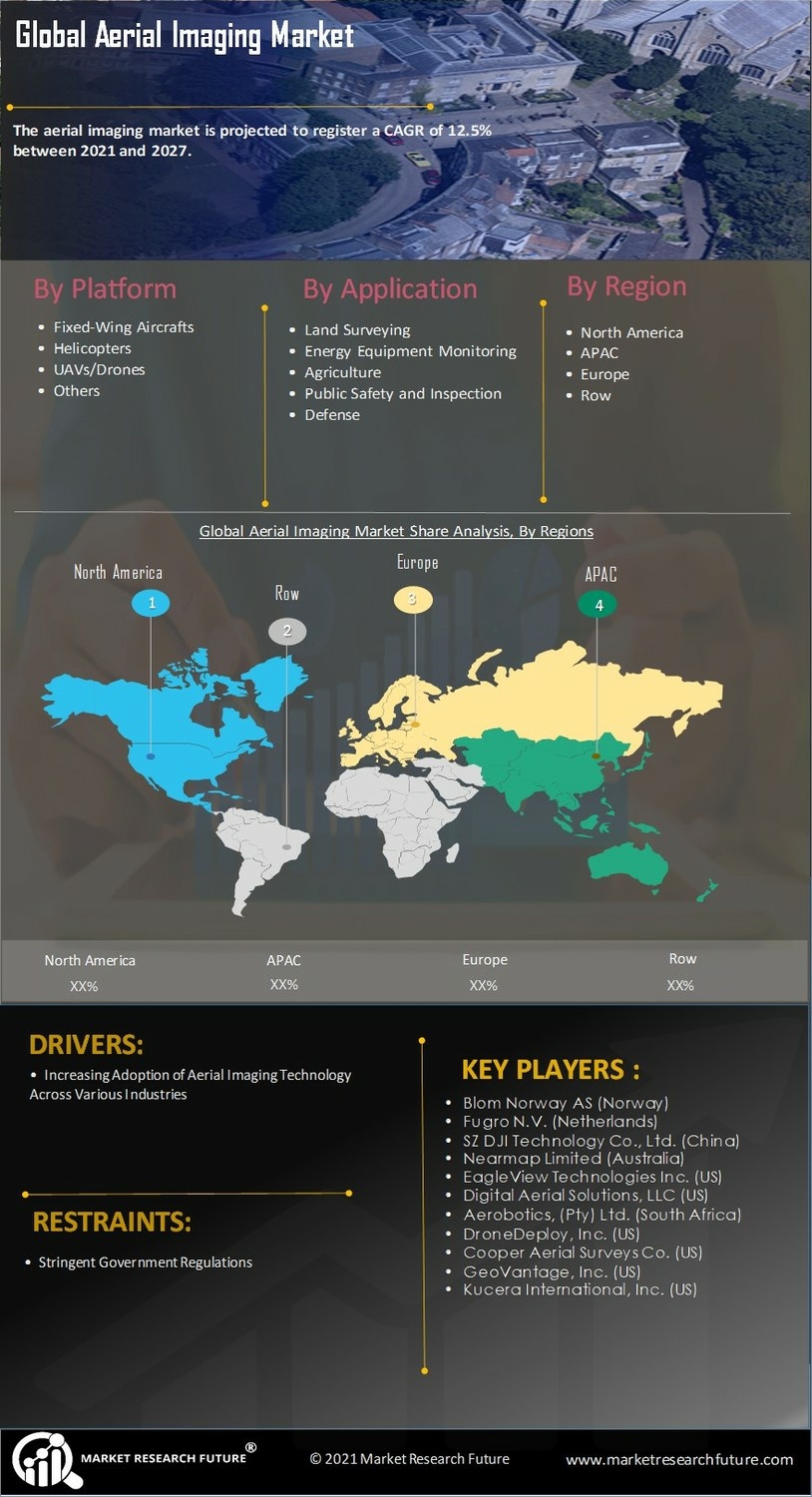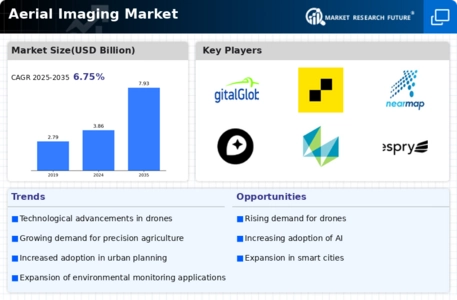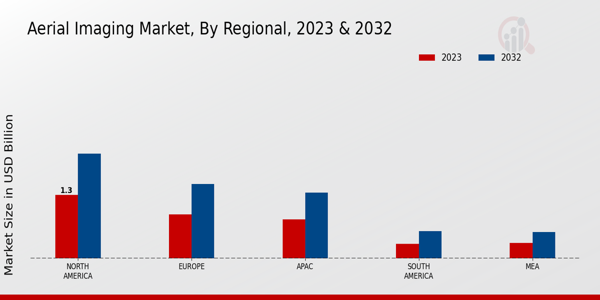Rising Interest in Smart Cities
The Aerial Imaging Market is witnessing a rise in interest related to the development of smart cities. As urban areas become more populated, there is a pressing need for innovative solutions to manage resources efficiently. Aerial imaging provides critical data for urban planners and city officials, enabling them to monitor infrastructure, traffic patterns, and environmental conditions. The smart city market is anticipated to grow at a rate of around 12% in the coming years, which is likely to drive demand for aerial imaging services. By utilizing aerial imagery, cities can enhance their planning processes, improve public services, and create more sustainable environments, thereby contributing to the overall growth of the Aerial Imaging Market.
Advancements in Drone Technology
The Aerial Imaging Market is being propelled by advancements in drone technology, which have revolutionized the way aerial data is captured. Drones equipped with high-resolution cameras and sensors are becoming more accessible and affordable, allowing a wider range of industries to utilize aerial imaging. The drone segment of the market is projected to grow at a rate of approximately 15% over the next few years. This rapid growth indicates a shift in how aerial imaging is conducted, with drones offering flexibility and efficiency that traditional methods cannot match. As industries such as agriculture, construction, and real estate increasingly adopt drone technology, the Aerial Imaging Market is likely to see substantial growth, driven by the demand for innovative solutions.
Expansion of Environmental Monitoring
The Aerial Imaging Market is increasingly influenced by the expansion of environmental monitoring initiatives. As concerns regarding climate change and environmental degradation rise, there is a growing emphasis on sustainable practices. Aerial imaging technology plays a crucial role in monitoring natural resources, assessing land use changes, and tracking wildlife populations. The market for environmental monitoring is expected to grow significantly, with estimates suggesting a potential increase of 7% annually. This growth is likely to be fueled by the need for accurate data to inform policy decisions and conservation efforts. Aerial imaging provides a cost-effective and efficient means of gathering data over large areas, making it an indispensable tool for environmental agencies and organizations.
Integration of Artificial Intelligence
The integration of artificial intelligence (AI) into the Aerial Imaging Market is transforming data analysis and interpretation. AI algorithms can process vast amounts of aerial imagery data, identifying patterns and insights that would be difficult for humans to discern. This capability enhances the value of aerial imaging, making it a powerful tool for various applications, including urban planning, disaster management, and agriculture. The AI segment within the aerial imaging market is expected to grow significantly, with projections indicating a potential increase of 10% annually. This growth reflects the increasing reliance on data-driven decision-making across industries, as organizations seek to leverage AI to optimize their operations and improve outcomes.
Growing Demand for Infrastructure Development
The Aerial Imaging Market is experiencing a surge in demand driven by the increasing need for infrastructure development. Governments and private sectors are investing heavily in urban planning, transportation networks, and public utilities. Aerial imaging provides precise data for surveying and mapping, which is essential for effective project management. According to recent estimates, the infrastructure sector is projected to grow at a compound annual growth rate of over 5% in the coming years. This growth is likely to enhance the demand for aerial imaging services, as stakeholders seek accurate and timely information to support their projects. The ability to capture high-resolution images and data from above allows for better decision-making and resource allocation, thereby propelling the Aerial Imaging Market forward.



















Leave a Comment